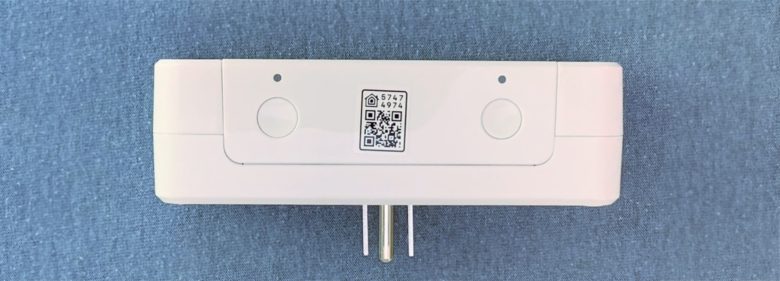Satechi’s dual-socket smart outlet lets you easily dip your toe into home automation. There’s nothing to install — you just plug it in — but the Dual Smart Outlet still allows you to control two different appliances from your iPhone, iPad, etc. It uses Apple’s HomeKit so it’s compatible with plenty of other accessories.
Find out how you can take a first step into controlling your home with Siri voice commands in our hands-on review.
This post contains affiliate links. Cult of Mac may earn a commission when you use our links to buy items.
Satechi Dual Smart Outlet review
The Dual Smart Outlet looks a bit like a two-plug power strip that plugs directly into a wall socket. And that’s really what it is, though HomeKit support allows you to remotely turn each plug on or off separately.
That said, it’s a very large power strip: 5.1 inches by 1.6 in. by 1.5 in., and 0.3 pounds. It’s bulky enough that you might want to position it behind a chair or table.
But don’t hide it too deeply. Above each socket is a power button that can turn it on or off. This is more convenient than voice commands if you happen to be sitting next to the Dual Smart Outlet.
The exterior is white plastic, like every HomeKit-compatible smart plug we’ve used. The look is inoffensive, but isn’t going to blend well with walnut paneling.

Photo: Ed Hardy/Cult of Mac
Satechi Dual Smart Outlet performance
Satechi provides an application to control the Dual Smart Outlet but you don’t have to use it. It’s not bad software, but this accessory is fully HomeKit compatible so it can be controlled entirely from Apple’s Home app. If you become a fan of home automation — and that’s easy to do — you’re almost certainly going collect accessories made by a variety of companies. It’s better to use Apple’s software from the start.
Adding the Dual Smart Outlet to the Home app just requires scanning a bar code with an iPhone or iPad. The software handles everything else.
Just be aware that Satechi’s accessory only supports 2.4GHz Wi-Fi networks. Most home routers offer both 5GHz and 2.4GHz networks and it’s important that the iOS device be connected to the 2.4GHz one during the set up process. You can switch back to 5GHz later.
Once this smart plug is in the Home app, you can give each of its two sockets different names and control them separately. One of them can be Lamp and the other Fan; it all depends on what you plug into the sockets.
Then you can control them with voice commands. “Hey Siri, turn on Lamp” is all it takes.
Learn more about HomeKit
Once you get past the novelty of basic commands, you can start creating scenes. This is Apple’s term for a collection of commands. You can name a scene Good Night and have it turn off the Lamp and turn on the Fan. Just saying “Hey Siri, Good Night” will do both at once.
It’s also possible to automate commands. The lamp plugged into the Dual Smart Outlet can automatically turn itself off whenever you leave the house, for example. Or turn itself on at 10 pm every day.
You’ll need a hub device to issue commands to HomeKit accessories when you’re not on the same wireless network. This can be a HomePod, an Apple TV, or an older iPhone or iPad.
Apple has a nice guide on how to set up and control HomeKit accessories with the Home application.
It’s important to note that this Satechi offering only supports Apple HomeKit. Some rivals can also be controlled from Alexa or Google devices.
Satechi Dual Smart Outlet final thoughts
A simple smart plug is an easy way to try out home automation. And the Satechi Dual Smart Outlet is that, but twice as good. Installation is a snap, and you get all the benefits of Apple’s HomeKit.
This accessory is a bit bulky, but that’s nothing proper positioning of a chair or potted plant can’t fix.
Pricing
Satechi’s list price for the Dual Smart Outlet is $59.99. It’s available through Amazon.
Buy from: Amazon
Buy from: Amazon
Buy from: Amazon
The very popular Wemo Mini Smart Plug lists for $34.99, though it’s usually available for about $30. That’s half the price of the Satechi device but it has just one socket. Twice as much money for double the sockets seems reasonable.
Satechi provided Cult of Mac with a review unit for this article. See our reviews policy, and check out more stuff we recommend.
![Satechi dual HomeKit plug makes your outlets smarter [Review] Satechi Dual Smart Outlet review](https://www.cultofmac.com/wp-content/uploads/2019/07/BAAA4969-1A06-4BD3-A49F-A07F35BA879C.jpeg)

